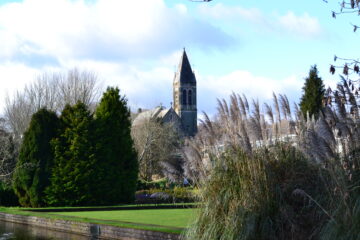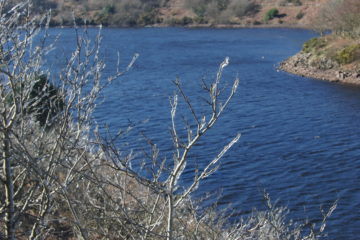With its varied habitats and wide open spaces, Dartmoor is a haven for many types of wildlife and that includes birds. Ornithologically, the area differs from other upland regions of the UK and although the overall number of species found here may be lower than in the mountainous areas in the north of the country, Dartmoor does possess a unique mix of lowland heath and upland bird species. Therefore, whether you’re a committed twitcher or just enjoy nature, there are many opportunities for birdwatching on the moors.
The moorland and woodland habitats of Dartmoor are home to a fascinating variety of birds and are becoming a stronghold for species, including the skylark and snipe, that are in decline in other areas of the UK. Birds such as the ring ouzel and cuckoo are now rarely seen in other parts of the country, and many visitors come to the area just to catch a glimpse of them. If you visit the pretty village of Belstone during the spring or summer months, you’ll almost certainly hear a cuckoo, even if you don’t actually see one. More familiar species, such as the meadow pipit and stonechat, are found on Dartmoor in internationally significant numbers.
The mild climate and high rainfall mean that Dartmoor’s woodlands are classed as temperate rainforests. Many are made up of mature oak trees, covered in mosses, lichens and ferns, with an understorey dominated by bluebells in springtime. This habitat attracts a number of migrant birds, including the pied flycatcher, wood warbler and common redstart.
The Moorland Birds project aims to protect and celebrate key species found on Dartmoor. Although originally centred around the red-backed shrike, the focus has now shifted to encompass other species. As well as conducting breeding surveys, the project will help farmers and landowners to develop practices to protect important habitats.
One of the best areas for birding is the woodland around Castle Drogo, particularly Hunter’s and Fisherman’s Paths within the National Trust estate (free entry to woodland walks, but you must pay for parking unless an NT member). The paths are fairly easy, but steep and jagged in places, so sensible footwear is a must.
The wooded valley of Yarner Woods, on the eastern edge of Dartmoor, is also a great place for birdwatching. In the winter months, bird feeders, visible from two hides, attract numerous species. Late winter/early spring is the best time to visit if you want to see the elusive lesser spotted woodpecker. Although there are no leaves to obscure your view, these little birds are still hard to spot. Summer visitors include several species of warblers, chiffchaff, flycatchers and blackcap.
The open moorland around the rocky outcrop of Haytor is known for its breeding colonies of curlews and lapwing, and cuckoos are also common in the area. Outside the summer months, golden plover are often seen. There’s a good chance of spotting a firecrest around the ponds that have formed in the former quarries, as well as commoner birds such as tits, robins and wrens.


